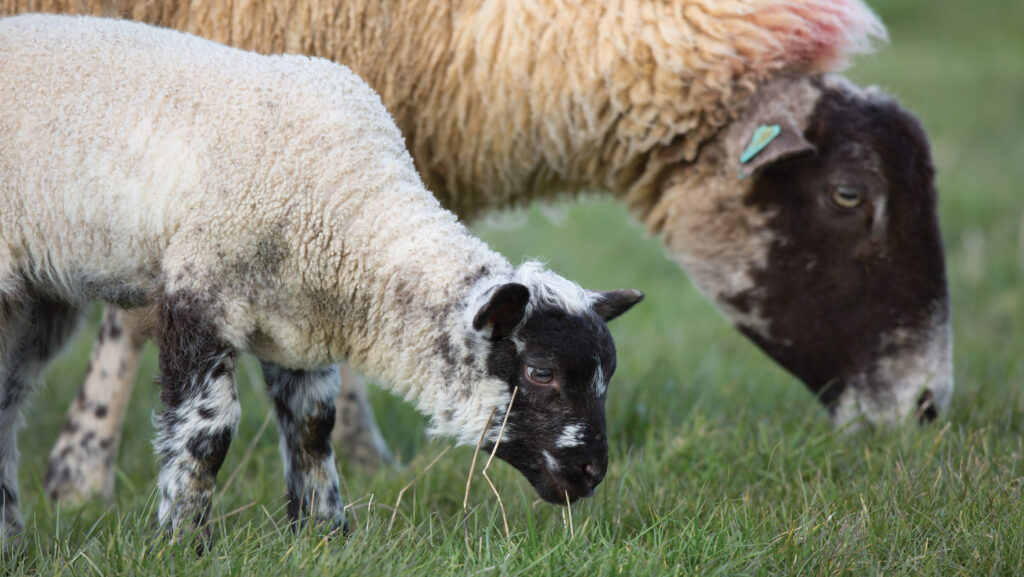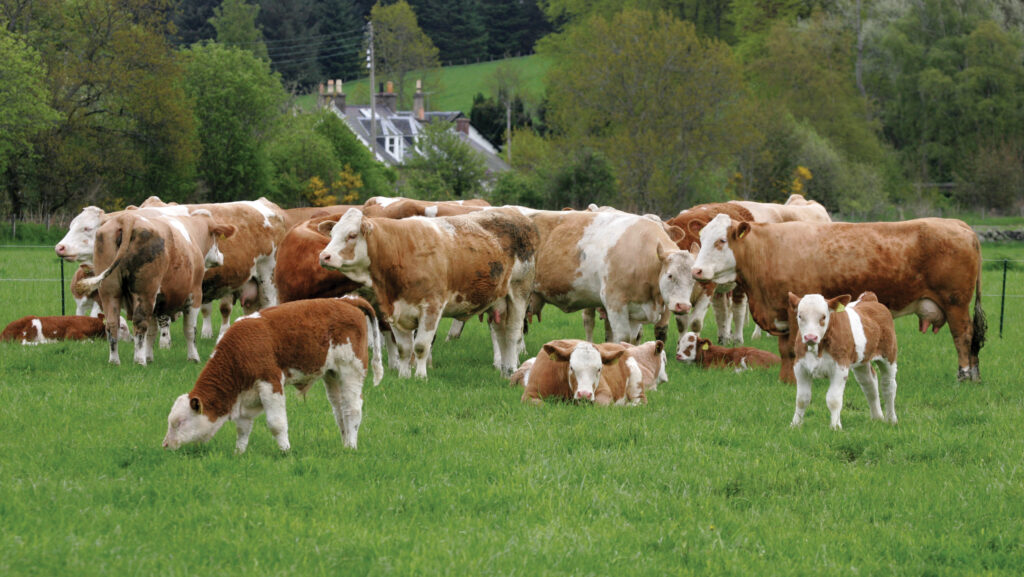Carbon footprint study shows scope for beef and sheep efficiency gains
 © Tim Scrivener
© Tim Scrivener First-year results of a major carbon footprinting study have shown a huge variation in greenhouse gas emissions from beef and sheep farms across the UK.
The average carbon footprint of a kilo of beef was 26.2kg carbon dioxide equivalent (CO2e)/kg deadweight, while that of a kilo of lamb was 22.3kg.
See also: 5 ways to improve flock carbon efficiency before winter
However, results ranged from less than 10kg CO2e/kg deadweight, to more than 55kg for both cattle and sheep, in the 354 farms involved in the Programme for the Improvement in Sustainability of Red Meat (Prism) study.

© Tim Scrivener
Beef results
Commenting on the results for beef, Dr Jude Capper of Harper Adams University, said it was not surprising there was such a wide range of results given beef systems are so varied.
“What this also shows is there are so many opportunities to look at those farms at 10kg carbon, and even 15-20kg and ask, for example, how are they different to the farms out at 45-50?
“What gives them that lower footprint? Is it based on lower fertiliser use? Is it based on cow fertility? Is it based on daily liveweight gain?”
Commenting on farms with results at the high end, she added:
“Sometimes, that’s simply because the enterprise has only just started – if you’ve bought in lots of cattle and you haven’t got many through to slaughter yet, you’re going to have a higher carbon footprint.”
Results varied between enterprise type (see “Comparison of beef carbon footprint on Prism farms”), with suckler herds having a higher carbon footprint than finishers.
However, Jude stressed: “This does not mean sucklers are bad: [these farms] have a higher footprint because they’ve got cows on the farm all year round, and that may not be the case for those who classify themselves as a finisher.
“But again, it does show we’ve got opportunities [for every enterprise to do better] because in all those categories there were farms at less than 10 and farms at greater than 55kg [CO2e/kg deadweight].”
Comparison of beef carbon footprint on Prism farms |
||
|
Enterprise |
Number of farms |
Greenhouse gas emissions (kg carbon dioxide equivalent/kg deadweight) |
|
Hill and upland sucklers |
22 |
31.4 |
|
Lowland sucklers |
120 |
30.8 |
|
Beef-bred or continental finishers |
68 |
23.7 |
|
Dairy cross beef finishers |
108 |
22.9 |
|
Total |
318 |
|
|
Source: Prism |
||
Sheep results
Sheep results showed a similar pattern, though with slightly lower averages than those for beef, and with less clear differences between systems.
“Store lambs are lower, at 21.8, but that’s principally because they tended not to have any ewes on the operation so didn’t have to maintain a flock through the year,” said Jude.
Comparison of sheep carbon footprint on Prism farms |
||
|
Enterprise |
Number of farms |
Greenhouse gas emissions (kg carbon dioxide equivalent/kg deadweight) |
|
Crossbred flock* |
64 |
26.8 |
|
Early-lambing flock |
39 |
20.4 |
|
Hill flock |
9 |
24.5 |
|
Late-lambing flock |
52 |
24.2 |
|
Store lambs |
36 |
21.8 |
|
Total |
200 |
|
|
*Comprises flocks that do not fall into the other categories, even if ewes are not crossbred. Source: Prism |
||
“If we do everything we can to make every single animal as productive and efficient as it can be, it should have a lower carbon footprint and come at a lower economic cost of production.”
Routes to improvement
As well as gaining a better understanding of the UK beef and sheep industry’s carbon footprint, the aim of Prism was to determine the KPIs each participating farm should focus on to improve it.
Data such as age at first calving, daily liveweight gain and lambing percentage were collected and used to produce individual recommendations (see “Top five recommendations to improve carbon footprint on Prism farms”).
“For each farm, we said, based on your individual challenges and limitations, and looking at your data, these look like the things you should do on your farm,” explained Jude.
“In total, we had about 35 recommendations.
“The number one was to improve pasture [by] doing everything to make sure you’ve got really good grass, because that grass is the foundation of your cattle performance and your soil health.”
Top five recommendations to improve carbon footprint on Prism farms
1. Improve pasture
How: Rotational grazing; multispecies swards; measure grass growth; test soils; reduce wastage; lime; optimise fertiliser use via nutrient management planning and variable rate applications.
2. Reduce age at slaughter
How: Increase growth rates; select genetics for improved growth; reduce diseases that impact performance; improve feed efficiency; use targeted ration formulations; analyse feeds.
3. Improve livestock health
How: Implement a herd/flock health plan; record fertility and disease issues and take action; use vaccines where appropriate; breed replacements that have the best calving intervals, calving histories and weaning weights; improve biosecurity; better use of bedding.
4. Reduce fuel consumption
How: Instead of idling, turn off machines; use smaller machines; check tyre pressures; keep machinery maintained.
5. Use by-product feeds
How: Consider contracts with local vegetable, fruit or bakery companies/factories (dependent on location).
Next steps
Data collected in the study will continue to be analysed and information disseminated to the participating farmers.
A second round of carbon assessments is about to start, as is work with about 50 farmers on areas including biodiversity, soil health and water quality.
Carbon footprinting tips
- Calculate carbon footprint each year (over the same 12-month period) to show farm trends
- Use the same carbon calculator year on year
- Set targets and actions for improvement, and measure and record progress
Source: Prism
Scope of farmer involvement in Prism
The Programme for the Improvement in Sustainability of Red Meat (Prism) was launched in November 2022 by ABP in collaboration with consultants the Andersons Centre and Harper Adams University.
Farms recruited to the programme:
- Are sole beef or sheep enterprises, or beef and sheep combined
- Cover a range of flock and herd sizes
- Run systems from hill sheep to early lambing lowland flocks, and intensive to extensive beef units
- Supply ABP, representing 15% of its sheep kill and 20% of its beef kill
- Generated a total of 518 datasets
- Were assessed using the Agrecalc farm carbon calculator
- Received 134 grants of up to £1,000 from ABP for items such as electric fencing and electronic identification tags
Prism farmer Mike Powley
Mike Powley runs 120 spring-calving South Devon cross Angus suckler cows, which he puts to a Charolais terminal sire. He breeds his own replacements and takes all stock to finishing weight.
Mike is using his carbon footprint score as a benchmark to guide further improvements at Oak House Farm in the Vale of York. He plans to increase the area of red clover grown for silage in the arable rotation to sequester more carbon and maintain daily liveweight gain in his cattle: “It’s all about kilos of meat we’re producing per cow per year,” he says.
He is also looking for the best genetics for fertility and feed efficiency so he can run low-cost cows that give “ a tremendous amount of output”.
For more on Mike’s system, go to How red clover and ryegrass save £1 a day on bull diet
